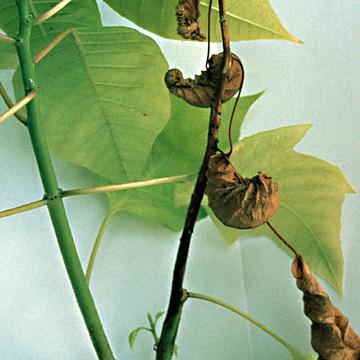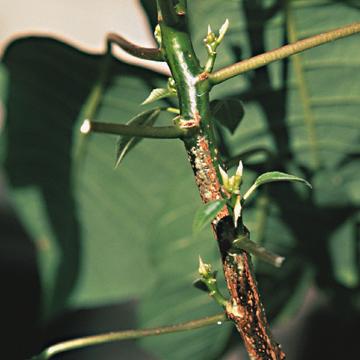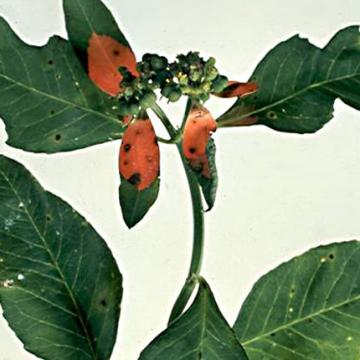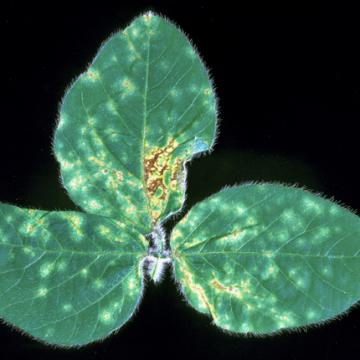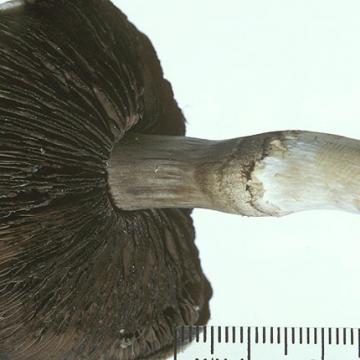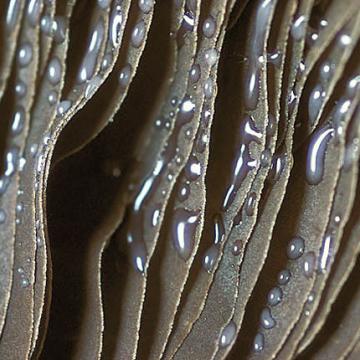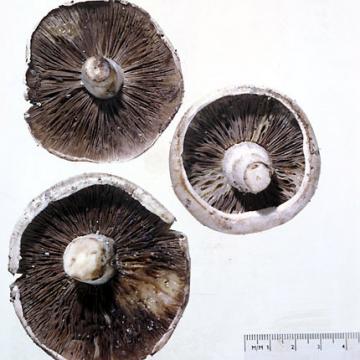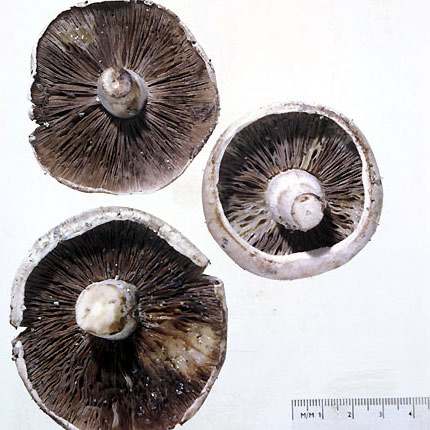DISEASE: Bacterial blight
HOST: Soybean
Leaves with yellowish brown necrotic lesions. Lesions also may be yellow to light brown and bordered by yellowish green halos. Lesions occur on stems, petioles, and pods.
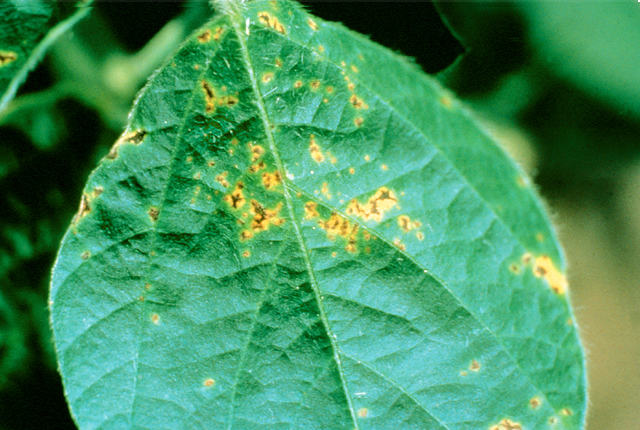
Bacterial blight | Soybean
DISEASE: Bacterial blight
HOST: Soybean (Glycine max)
PATHOGEN: Pseudomonas syringae pv. glycinea
SOURCE: J. B. Sinclair
DISEASE: Bacterial leaf spot (Blight)
HOST: Poinsettia
Blighted leaves and stems.
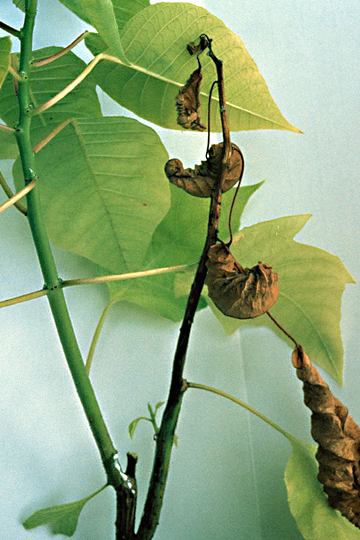
Bacterial leaf spot (Blight) | Poinsettia
DISEASE: Bacterial leaf spot (Blight)
HOST: Poinsettia (Euphorbia pulcherrima)
PATHOGEN: Curtobacterium flaccumfaciens pv. poinsettiae
SOURCE: APS
DISEASE: Bacterial leaf spot (Blight)
HOST: Poinsettia
Poinsettia with diseased stem. Woody stems may have a yellowed cortex and dark vascular tissues. The stem tip may curve with deformed terminal leaves.

Bacterial leaf spot (Blight) | Poinsettia
DISEASE: Bacterial leaf spot (Blight)
HOST: Poinsettia (Euphorbia pulcherrima)
PATHOGEN: Curtobacterium flaccumfaciens pv. poinsettiae
SOURCE: APS
DISEASE: Bacterial leaf spot (Blight)
HOST: Poinsettia
Leaves with small, dark spots, an early stage of disease.
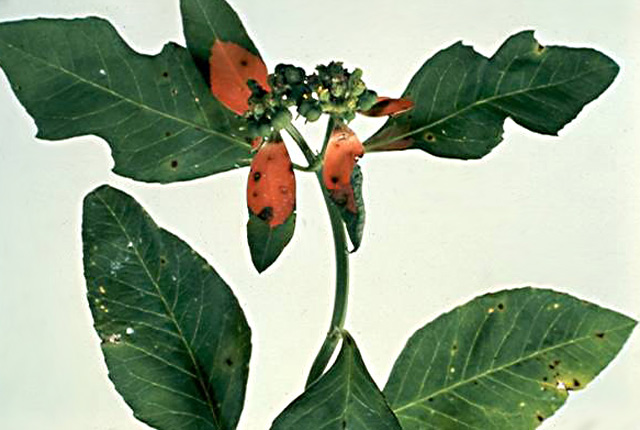
Bacterial leaf spot (Blight) | Poinsettia
DISEASE: Bacterial leaf spot (Blight)
HOST: Poinsettia (Euphorbia pulcherrima)
PATHOGEN: Curtobacterium flaccumfaciens pv. poinsettiae
SOURCE: A. Alvarez
DISEASE: Bacterial leaf spot
HOST: Soybean
Early symptoms of bacterial blight.
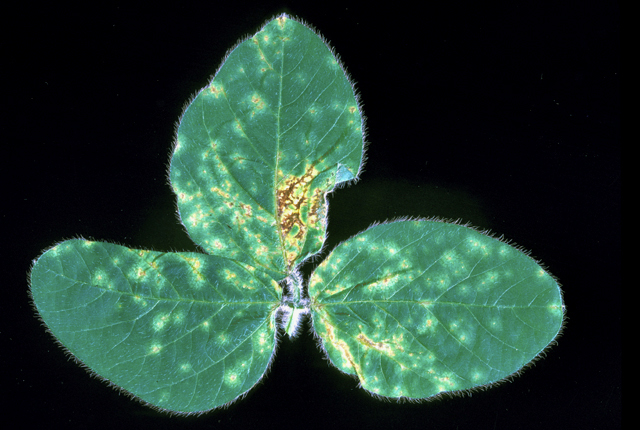
Bacterial leaf spot | Soybean
DISEASE: Bacterial leaf spot
HOST: Soybean (Glycine max)
PATHOGEN: Pseudomonas syringae pv. glycinea
SOURCE: D. Cupples
DISEASE: Drippy gill
HOST: Mushroom
Drippy gill is characterized by small dark spots on gills with drops of bacterial ooze at the centers. Severe infection results in slimy areas and collapse of gills.
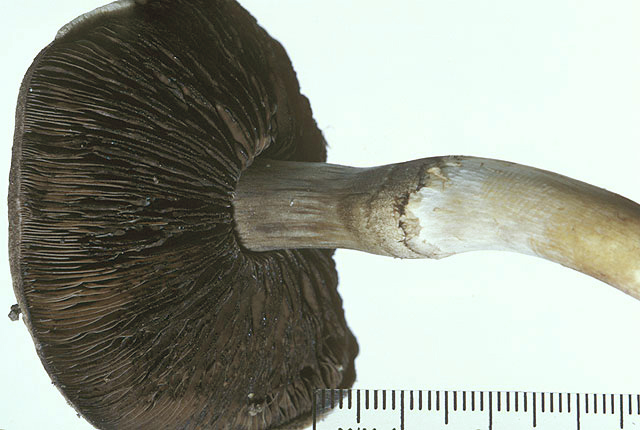
Drippy gill | Mushroom
DISEASE: Drippy gill
HOST: Mushroom (Agaricus campestris)
PATHOGEN: Pseudomonas agarici
SOURCE: J. Young
DISEASE: Drippy gill
HOST: Mushroom
Close-up of infected gills with bacterial ooze.
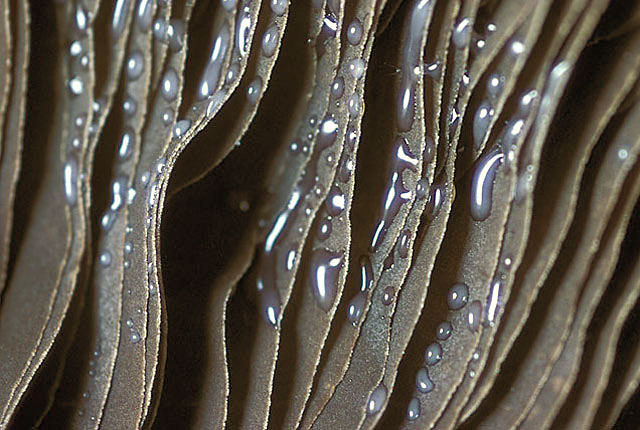
Drippy gill | Mushroom
DISEASE: Drippy gill
HOST: Mushroom (Agaricus campestris)
PATHOGEN: Pseudomonas agarici
SOURCE: J. Young



